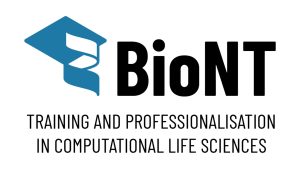Best practices
Privacy-Preserving Training Format for Live and Self-Paced Learning
Users: Training Providers (Private), Training Providers (Public) | Theme: Programme development | Action: Education programmes/courses | Beneficiaries: Training Providers (Private), Training Providers (Public), Learners (STEM background), Learners (non-STEM background).
The challenge?
Our project faced three interconnected challenges:
- Many participants, particularly job-seekers and industry professionals from SMEs, expressed reluctance to fully engage in training sessions if they might be recorded or identified. Job-seekers feared this could negatively impact their future job prospects, whilst industry professionals were hesitant to disclose their affiliation or display their faces, as this could reveal competitive information or interest in upskilling that they preferred to keep confidential.
- Creating high-quality, reusable self-paced learning materials from live training sessions typically requires capturing live discussions and interactions, which conflicts with participants’ privacy requirements.
- Traditional recording approaches that include participant faces, names, and verbal questions would have required extensive post-production video editing to anonymise content before publishing as self-paced learning materials. This would have significantly increased production costs and time requirements, potentially making the creation of such resources unsustainable within our project constraints.
Without addressing these challenges, we risked low enrolment numbers from our target audience and would have significantly limited our ability to create valuable, cost-effective self-paced learning materials for broader impact.
Our solution
We developed and refined a hybrid training delivery format that prioritises participant privacy whilst enabling the creation of reusable content:
- Restrictive participation format: We used a delivery format that restricted trainee participation to viewing only, without the ability to speak, share video, or use chat functions. This ensured that recordings captured only the instructor’s content without any participant information.
- Text-based interaction system: We implemented a collaborative document platform (HedgeDoc) hosted on our own servers where participants could anonymously ask questions and provide feedback during the session. Participants were able to interact without providing any personal data.
- Carefully structured recording approach: Training sessions were recorded to capture only the instructor’s screen, voice, and presentation materials. The collaborative document was monitored and cleaned of any potentially identifying information before being included in recordings.
- Helper system: We assigned dedicated helpers who monitored the collaborative document in real-time, answering questions and providing support without disrupting the flow of the training or revealing participant identities.
Outcomes
The implementation of this privacy-preserving format yielded several positive outcomes:
- Efficient creation of self-paced learning materials: The format allowed us to produce high-quality recordings without any post-production editing to remove participant information, significantly reducing resource requirements for creating self-paced learning materials.
- Positive trainer adaptation: Despite initial hesitation from trainers who were accustomed to fully interactive live sessions, we received positive feedback about the format’s effectiveness.
- Participant comfort: Feedback indicated that participants appreciated the anonymity provided, with many noting they felt more comfortable asking questions in a text-based format without revealing their identity. This format also gives room to the participants who would usually not ask questions live, making the format more inclusive.
- Sustainable model for future training: The format has been successfully replicated across all our training workshops, providing a proven template for future initiatives that can be implemented with minimal resources.
Key takeaways
Based on our experience, organisations implementing similar training formats should consider:
- Balance privacy with interaction: While restricting traditional participation methods, ensure alternative channels for meaningful interaction that preserve anonymity.
- Prepare trainers adequately: Provide proper orientation for trainers who may be accustomed to seeing and hearing participants, helping them adapt to text-based interaction systems.
- Establish clear helper protocols: Define specific roles for helpers monitoring the text-based interaction system, including guidelines for anonymising questions before addressing them.
- Design for direct recording use: Structure training sessions assuming that recordings will be used as-is without editing, including careful planning of screen sharing and demonstration segments.
- Create trainer-helper communication channels: Establish private communication methods between trainers and helpers to coordinate responses and manage participant questions efficiently.
- Test thoroughly before implementation: Conduct pilot sessions to identify potential privacy risks or technical issues with your chosen platforms and tools.
- Document the process: Create clear documentation of your approach to make it easily replicable across different training topics and by different training teams.

